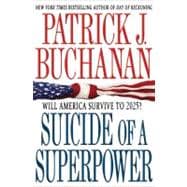
Praise for Pat Buchanan:
“Buchanan is an honest writer who … minces nothing except an occasional opponent.”
—The Philadelphia Inquirer
“Nobody turns a sharp phrase, drops an historical reference, or makes a literary allusion as naturally as Pat Buchanan.”
—Human Events
“Buchanan is a muscular writer, fully in command of the English language he feels is under siege. He is adept at linking history, statistics, and the writings of philosophers and economists to proffer forceful arguments.”
—The Washington Post
“Mr. Buchanan … is positively fearless. He is also right.”
—Tony Blankley, The Washington Times
“His approach is that of a true conservative, offering a perspective rooted in American tradition initiated by Washington.”
—Kirkus Reviews
The New copy of this book will include any supplemental materials advertised. Please check the title of the book to determine if it should include any access cards, study guides, lab manuals, CDs, etc.
The Used, Rental and eBook copies of this book are not guaranteed to include any supplemental materials. Typically, only the book itself is included. This is true even if the title states it includes any access cards, study guides, lab manuals, CDs, etc.